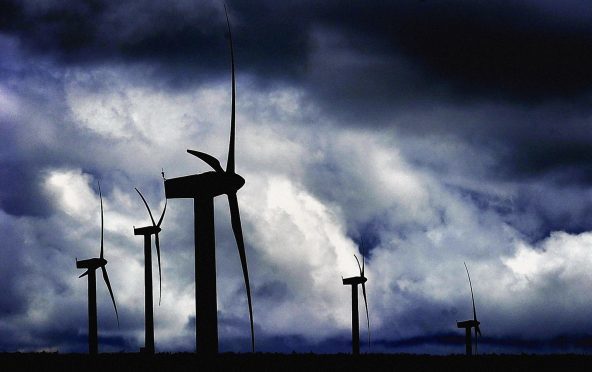Windfarm operators across the north have raked-in a staggering £52million over the past five years – for switching their turbines off.
It has cost customers in the Highlands and islands £28,000 a day on average to meet the so-called “constraint payments” since they were introduced in 2011.
The National Grid asks operators to put the brakes on their turbines to safely balance the volume of electricity on the network – and then gives them compensation.
The cost is the passed on to households in their bills.
The 10 Highland windfarms which qualify for the payments have collected a total of £52million.
Scotland-wide, a total of £217million had been paid out, and the figure for the whole of the UK is £224million.
Industry watchers described the figures as “madness”, although renewables chiefs said the payments were imply “part of the overall efficient management of our electricity system”.
In Highland, Baillie Windfarm at Caithness (owned by Statkraft) has had £1.5million in compensation; Beinn Tharsuinn in Ross-shire (ScottishPower Renewables) £4.8million; Edinbane on Skye (Vattenfall) £3.4million; Farr 1 in Inverness-shire (RWE Innogy) £6.7million; Farr 2 £4.5million; Gordonbush in Sutherland (SSE) £10.5million; Strathy North in Sutherland (SSE) £2million; Kilbraur 1, in Sutherland (Falck Renewables) £7.7million; Lochluichart in Ross-shire (Eneco) £645,000 and Millennium 1 in Inverness-shire (Falck) £10.3million.
Highland anti-windfarm campaigner Lyndsey Ward said: “These are mind-boggling sums of money that enriches the already wealthy wind multinationals to not generate electricity – and it comes out of our pockets.
“It’s time to end this madness.”
She suggested the payments may be the reason windfarms were still seen as a lucrative business, despite subsidies being axed.
The charitable Renewable Energy Foundation (REF), which first exposed the constraint payments system, said the level of compensation to some wind schemes had fallen but “at its lowest, is still greatly in excess of the lost income”.
REF director, John Constable, said: “These windfarms make more money when they’re not generating than when they do.
“Excessively high constraint payments are a scandal, and (industry regulator) Ofgem would be fully justified in stepping in firmly.”
However, he added that paying windfarmer operators to stop generating “may be cheaper than expanding the grid to remove bottlenecks”.
The compensation payments have shrunk from an initial peak of £178 per megawatt hour (MWh) to £65 per MWh this year.
REF attributes the cut to “embarrassing publicity” and Ofgem tightening up its licence conditions.
There is huge disparity in the amounts paid.
SSE’s Strathy North scheme in Sutherland, for example, charges £59/MWh while Farr 1 charges £115/MWh.
REF said: “This distribution of prices suggests the market is not efficient and may not even be a ‘market’ at all.”
James Treasurer, of the Friends of the Great Glen group, said: “This is a national scandal.
“Not only is the electricity unit charge higher in the Highlands and islands than anywhere else, but we have the added insult of constraint payments.
“Because of the fluctuation in capacity of onshore windfarms we’re subsidising energy companies that are plunging many Highland families into fuel poverty.”
Michael Rieley, senior policy manager of the trade body Scottish Renewables, said: “Constraint payments are a normal part of the overall efficient management of our electricity system, given the limitations of the UK’s ageing energy infrastructure.
“National Grid pays a variety of technologies to reduce or increase output as required to help balance the system.
“Overall, delivering a modern electricity network capable of getting power generated to customers must be a priority over the coming years, and is the best way to minimise the cost of constraint payments to consumers.”
A spokesman for the Scottish Government said: “Power generating companies are paid constraint and balancing payments by National Grid for their flexibility in managing it and, as such, the payments are a matter for National Grid directly.”
